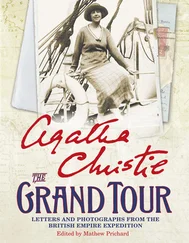Nelson Johnson - Boardwalk Empire - The Birth, High Times, and Corruption of Atlantic City
Здесь есть возможность читать онлайн «Nelson Johnson - Boardwalk Empire - The Birth, High Times, and Corruption of Atlantic City» весь текст электронной книги совершенно бесплатно (целиком полную версию без сокращений). В некоторых случаях можно слушать аудио, скачать через торрент в формате fb2 и присутствует краткое содержание. Жанр: Старинная литература, на английском языке. Описание произведения, (предисловие) а так же отзывы посетителей доступны на портале библиотеки ЛибКат.
- Название:Boardwalk Empire: The Birth, High Times, and Corruption of Atlantic City
- Автор:
- Жанр:
- Год:неизвестен
- ISBN:нет данных
- Рейтинг книги:5 / 5. Голосов: 1
-
Избранное:Добавить в избранное
- Отзывы:
-
Ваша оценка:
- 100
- 1
- 2
- 3
- 4
- 5
Boardwalk Empire: The Birth, High Times, and Corruption of Atlantic City: краткое содержание, описание и аннотация
Предлагаем к чтению аннотацию, описание, краткое содержание или предисловие (зависит от того, что написал сам автор книги «Boardwalk Empire: The Birth, High Times, and Corruption of Atlantic City»). Если вы не нашли необходимую информацию о книге — напишите в комментариях, мы постараемся отыскать её.
Boardwalk Empire: The Birth, High Times, and Corruption of Atlantic City — читать онлайн бесплатно полную книгу (весь текст) целиком
Ниже представлен текст книги, разбитый по страницам. Система сохранения места последней прочитанной страницы, позволяет с удобством читать онлайн бесплатно книгу «Boardwalk Empire: The Birth, High Times, and Corruption of Atlantic City», без необходимости каждый раз заново искать на чём Вы остановились. Поставьте закладку, и сможете в любой момент перейти на страницу, на которой закончили чтение.
Интервал:
Закладка:
Success at real estate speculation came quicker than the development of a full-fledged resort. Pitney was pleased with his beach village, but it was a long way from being a serious resort. He knew that a permanent community had to be established, which would take time and a great deal of money. The obstacles to be overcome were many. First, there was the trainride itself—at best, it was an adventure. The early trains had no windows, only canvas curtains, and it was common for visitors to arrive covered with soot, their clothes and skin pocked by flying cinders from the coal-fired locomotive. A linen duster with hat and goggles were important accessories to the traveler’s wardrobe.
One of the early conductors of the Camden-Atlantic Railroad recalled his experience: “Atlantic City in 1854–55 was reached through sand hills and forests of pine and scrub oaks. Most of our cars were open coaches. My, how the dust did fly!” The early trains weren’t equipped with signals of any kind and, “When I wanted to stop the train to let off passengers, I went through the train and attracted the engineer’s attention by striking him with a splinter of wood and by holding up my fore finger told him a passenger was to get off at the next station.”
The adventure didn’t end with the train ride. When travelers arrived, they found a much bigger dose of nature than the resort’s promotions had led them to believe. The island was dotted with hundreds of wet places where insects could breed, and early guests were greeted by swarms of greenhead flies and mosquitoes.
Summer 1858 saw a plague of insects that nearly closed the resort down. Greenhead flies, gnats, and mosquitoes tormented the visitors all summer long. By mid-August most guests had stopped coming to town. One vacationer wrote home, “In my last letter I said mosquitoes were numerous here. They have since become a plague and there is no peace in this place.” The resort’s inability to deal with the problem was painfully obvious to its guests. “Last week the place was crowded with visitors; now they are escaping the scourge as rapidly as possible. This house is now surrounded with bonfires, in the hope that the smoke therefrom will drive off the enemy. The horses attached to carriages containing guests from the United States Hotel became so maddened from the attack of greenhead flies that they ran away demolishing the carriage, and broke the arm of one of the ladies.”
It was a nightmare that summer. According to reports from the time, horses covered with blood laid down in the streets, and cattle waded out into the ocean to escape the torture of the insects. Men, women, and children scratched and screamed and day visitors begged the conductors to start home ahead of schedule. For the next 10 to 15 years, the problem with the mosquitoes and greenhead flies was dealt with by pouring coal oil on the water of the ponds and wet spots that dotted the islands. The pests were eventually eliminated when the dunes were graded and the ponds filled with sand.
During these early years, the only refuge from insects for the visitor who went down to the beach was to either go into the water or hide in a bathhouse. The bathhouses were crude wooden structures that were carried down to the water’s edge in the spring and dragged back to the dunes in the fall. Another difficulty was the lack of something to separate the developed portion of the island from the beach. Sand was everywhere and it was common for the streets to flood at high tide.
Though seawater was everywhere, it wasn’t drinkable. For the first 30 years of Atlantic City’s existence, residents and visitors alike had to rely upon rainwater collected in cisterns as the sole source of water. True to its beginnings as a farm island, the cattle of local farmers were allowed to run free during the first decade of the resort. “Prior to 1864, the cattle, swine, and goats were permitted to run at large in the city. Up until that time every permanent resident of the place owned one or more cows.” Atlantic City’s main thoroughfare, Atlantic Avenue, was originally a cow path for cattle driven by farmers in the inlet area to the lower end of the island. As late as the 1880s one could see herds of cows being taken from one end of the town to the other and returned at night through the center of the village on Atlantic Avenue.
Finding the money for the improvements needed to establish a permanent community on Absecon Island was a lot more difficult than securing investors for the railroad. The original investors had gotten what they wanted and cared little about Pitney’s dream of a city by the sea. The Camden-Atlantic Railroad and the Land Company would finance only so much to help build Pitney’s resort. Plans for cutting through streets, leveling the dunes, filling ditches, and beginning the infrastructure needed for a city simply had to wait. The result was that for the first 20 years of its existence, Pitney’s beach village limped along, remaining a wilderness island.
As predicted by some of Pitney’s critics, Cape May remained a popular resort and posed stiff competition. Pitney had envisioned his resort as an exclusive area for the rich. The wealthy were slow to change their habits and while a few of them visited the fledgling resort, Cape May held a strong attraction. Anyone with enough money for an overnight stay generally preferred to visit Cape May. As for the working class, whose numbers in Philadelphia and Camden were growing steadily, the cost of vacationing remained beyond their reach. The blue-collar masses couldn’t afford the price of both a train ticket and the cost of lodging. The few who visited arrived in the morning and returned home at night.
At first, the Camden-Atlantic Railroad was barely able to break even financially. As an early observer noted, “Unpropitious times, flooding and washing away of tracks, and depression of bonds threatened to overwhelm the enterprise at its beginning. For 16 years it was one continuous struggle against these difficulties.” The railroad was forced into bankruptcy during the Panic of 1857, and if not for cash from the Land Company, the train would have gone under. The financial uncertainty produced by the Civil War denied the new resort badly needed investors and retarded the town’s growth. By 1872 things began to look up. The quality of the ride had improved and the passenger cars were clean and comfortable; there was even glass in the windows. The railroad was carrying more than 400,000 passengers annually to the resort and was able to pay a dividend to its stockholders. The volume of passengers continued to grow, and by 1874 nearly 500,000 passengers were brought into Atlantic City by rail.
After 20 years, Atlantic City had finally gained a foothold. Pitney finished out his years living quietly in Absecon Village and passed away in 1869. But for the younger Samuel Richards, Atlantic City was still a long way from its potential. There remained hundreds of undeveloped acres and no new investors to inject sorely needed capital. The businesses that survived the first two decades were only marginally successful. Their owners returned to Philadelphia each fall, leaving the resort a ghost town. Samuel Richards realized that mass-oriented facilities had to be developed before Atlantic City could become a major resort and a permanent community. From Richards’ perspective, more working-class visitors from Philadelphia were needed to spur growth. These visitors would only come if railroad fares cost less.
For several years Samuel Richards tried, without success, to sell his ideas to the other shareholders of the Camden-Atlantic Railroad. He believed that greater profits could be made by reducing fares, which would increase the volume of patrons. A majority of the board of directors disagreed. Finally in 1875, Richards lost patience with his fellow directors. Together with three allies, Richards resigned from the board of directors of the Camden-Atlantic Railroad and formed a second railway company of his own. Richards’ railroad was to be an efficient and cheaper narrow gauge line. The roadbed for the narrow gauge was easier to build than that of the first railroad. It had a 3½-foot gauge instead of the standard 4 feet 8½ inches, so labor and material would cost less.
Читать дальшеИнтервал:
Закладка:
Похожие книги на «Boardwalk Empire: The Birth, High Times, and Corruption of Atlantic City»
Представляем Вашему вниманию похожие книги на «Boardwalk Empire: The Birth, High Times, and Corruption of Atlantic City» списком для выбора. Мы отобрали схожую по названию и смыслу литературу в надежде предоставить читателям больше вариантов отыскать новые, интересные, ещё непрочитанные произведения.
Обсуждение, отзывы о книге «Boardwalk Empire: The Birth, High Times, and Corruption of Atlantic City» и просто собственные мнения читателей. Оставьте ваши комментарии, напишите, что Вы думаете о произведении, его смысле или главных героях. Укажите что конкретно понравилось, а что нет, и почему Вы так считаете.












